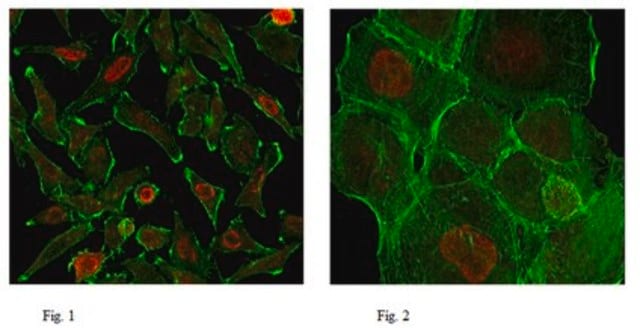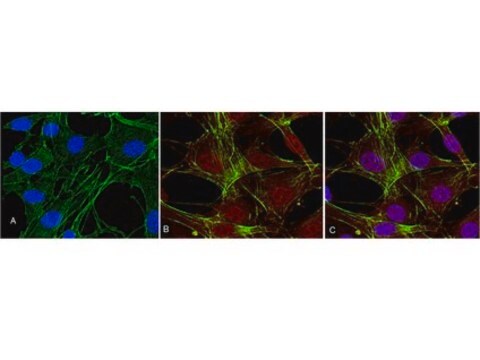05-952-I
Anti-RNA Polymerase II Antibody, CTD Antibody, clone 8WG16
clone 8WG16, from mouse
Synonyme(s) :
DNA-directed RNA polymerase II subunit RPB1, EC: 2.7.7.6, RNA polymerase II subunit B1, DNA-directed RNA polymerase II subunit A, DNA-directed RNA polymerase III largest subunit, RNA-directed RNA polymerase II subunit RPB1
About This Item
Produits recommandés
Source biologique
mouse
Forme d'anticorps
purified immunoglobulin
Type de produit anticorps
primary antibodies
Clone
8WG16, monoclonal
Espèces réactives
yeast, human
Conditionnement
antibody small pack of 25 μg
Technique(s)
dot blot: suitable
immunoprecipitation (IP): suitable
inhibition assay: suitable
western blot: suitable
Isotype
IgG2aκ
Numéro d'accès NCBI
Numéro d'accès UniProt
Modification post-traductionnelle de la cible
unmodified
Informations sur le gène
human ... POLR2A(5430)
Description générale
Spécificité
Immunogène
Application
Epigenetics & Nuclear Function
Dot Blot Analysis: A representative lot detected RNA Polymerase II, CTD in Dot Blot applications (Thompson, N.E., et. al. (1989). J Biol Chem. 264(19):11511-20).
Immunoprecipitation Analysis: A representative immunoprecipitated RNA Polymerase II, CTD in Immunoprecipitation applications (Bhaumik, S.R., et. al. (2001). Genes Dev. 15(15):1935-45).
Inhibition Analysis: A representative lot inhibited the interaction of RNA Polymerase II, CTD with the transcription complex. (Thompson, N.E., et. al. (1989). J Biol Chem. 264(19):11511-20).
Qualité
Western Blotting Analysis: 1 µg/mL of this antibody detected RNA Polymerase II, CTD in HeLa cell nuclear extract.
Description de la cible
Forme physique
Stockage et stabilité
Autres remarques
Clause de non-responsabilité
Not finding the right product?
Try our Outil de sélection de produits.
Certificats d'analyse (COA)
Recherchez un Certificats d'analyse (COA) en saisissant le numéro de lot du produit. Les numéros de lot figurent sur l'étiquette du produit après les mots "Lot" ou "Batch".
Déjà en possession de ce produit ?
Retrouvez la documentation relative aux produits que vous avez récemment achetés dans la Bibliothèque de documents.
Notre équipe de scientifiques dispose d'une expérience dans tous les secteurs de la recherche, notamment en sciences de la vie, science des matériaux, synthèse chimique, chromatographie, analyse et dans de nombreux autres domaines..
Contacter notre Service technique








